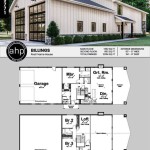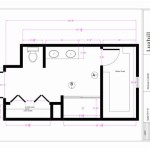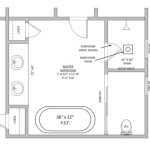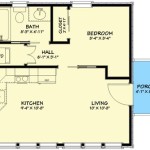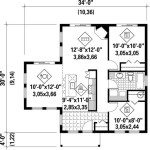How to Design Your Own House Plans
Building or renovating a home is a significant undertaking, and having a well-designed set of plans is crucial for achieving a successful outcome. While hiring an architect or professional designer is an option, many individuals choose to design their own house plans, allowing for greater control and personalization. This article will guide you through the process of designing your own house plans, empowering you to create a home that reflects your unique vision.
1. Define Your Needs and Goals
Before diving into the design process, it is essential to define your needs and goals for your future home. Consider the following aspects:
- Number of bedrooms and bathrooms: Determine the required number of bedrooms and bathrooms to accommodate your family size and lifestyle.
- Living space requirements: Identify the necessary square footage for living areas, dining areas, kitchens, and other common spaces.
- Outdoor space: Decide on the desired size and features of your yard, porch, or patio.
- Lifestyle and hobbies: Consider your specific needs, such as home offices, workshops, or entertainment areas.
- Budget: Establish a realistic budget for construction and materials, taking into account the cost of land, permits, and labor.
By carefully outlining your needs and goals, you create a clear foundation for your design decisions.
2. Research and Inspiration
Once you have a solid understanding of your requirements, it's time to gather ideas and inspiration. Explore various sources to identify architectural styles, floor plan layouts, and design elements that resonate with you.
- Architectural books and magazines: Browse publications showcasing different architectural styles, from modern to traditional.
- Online resources: Websites dedicated to home design, such as Houzz and Pinterest, offer a wealth of images, floor plans, and design ideas.
- Home tours: Visit open houses or model homes to experience different layouts and design features firsthand.
- Existing homes: Observe the features and layouts of homes in your neighborhood or surrounding areas that you find appealing.
Compiling a collection of inspiration can help you refine your vision and identify elements that you want to incorporate into your own house plans.
3. Choose a Design Software
To translate your ideas into tangible plans, you will need a design software. Various software options cater to different skill levels and budgets.
- Free online tools: Several free online tools provide basic drawing capabilities and templates for creating floor plans.
- Paid software: More advanced software programs offer a wider range of features, including 3D modeling, material selection, and cost estimation.
Consider your design experience, the complexity of your project, and your budget when choosing a software solution.
4. Draw Your Floor Plan
With your design software in hand, begin creating the floor plan for your home. This involves outlining the rooms, their sizes, and their arrangement within the house.
- Start with the main living spaces: Layout the living room, dining room, and kitchen, ensuring a logical flow between these areas.
- Add bedrooms and bathrooms: Consider privacy and functionality when positioning bedrooms and bathrooms.
- Include other rooms: Incorporate any additional rooms, such as a home office, playroom, or guest room, as needed.
- Pay attention to traffic flow: Ensure that the pathways through your house are clear and efficient.
- Consider accessibility: If necessary, plan for features that promote accessibility, such as wide doorways and ramps.
Experiment with different layouts and configurations to find the arrangement that best suits your needs and preferences.
5. Design the Exterior
Once you have a satisfactory floor plan, focus on the exterior design. This involves determining the style, materials, and overall appearance of your home.
- Choose an architectural style: Select a style that complements your neighborhood and personal taste, such as colonial, modern, or farmhouse.
- Select exterior materials: Consider factors such as cost, durability, and aesthetic appeal when choosing siding, roofing, windows, and doors.
- Design the landscaping: Plan for landscaping features, such as trees, shrubs, and walkways, to enhance the curb appeal and functionality of your property.
Visualize the exterior design in relation to your surrounding environment and strive for a cohesive and visually pleasing result.
6. Create Detailed Drawings
After finalizing the floor plan and exterior design, you will need to create detailed drawings for your house plans. These drawings serve as blueprints for construction and ensure that all elements are accurately represented.
- Floor plans: Provide a complete layout of each floor, showing room dimensions, furniture placement, and fixtures.
- Elevations: Show the exterior views of the house from all sides, including windows, doors, and roofing details.
- Sections: Provide vertical slices through the house to illustrate the relationship between different levels and interior features.
- Details: Create close-up drawings of specific elements, such as doors, windows, or stairs, to ensure accuracy and consistency.
Accurate and detailed drawings are essential for successful construction, so take your time to create thorough and clear representations of your house plans.
7. Get Feedback and Revisions
Before finalizing your house plans, it's beneficial to get feedback from others and make necessary revisions. Consult with a trusted friend, family member, or even a professional designer to gain fresh perspectives on your design.
- Consider different viewpoints: Encourage feedback on the functionality, aesthetics, and potential improvements of your plans.
- Incorporate constructive criticism: Be open to suggestions and consider how to incorporate them into your design.
- Make revisions as needed: Adjust your plans based on feedback and refine your design until you are satisfied.
Iterating on your plans and incorporating feedback helps ensure that you create a home that meets your needs and exceeds your expectations.

Designing My Own House

House Plans How To Design Your Home Plan

House Plans How To Design Your Home Plan

Floor Plan Creator And Designer Free Easy App

House Plans How To Design Your Home Plan

House Plans How To Design Your Home Plan

House Plans How To Design Your Home Plan

Floor Plan Creator And Designer Free Easy App

House Plans How To Design Your Home Plan

House Plans How To Design Your Home Plan


